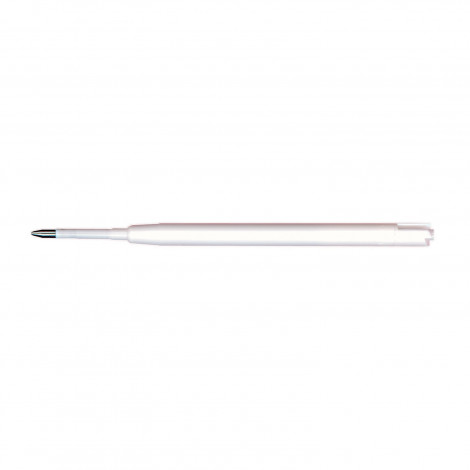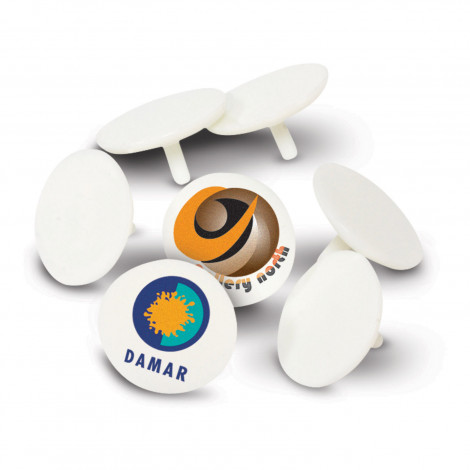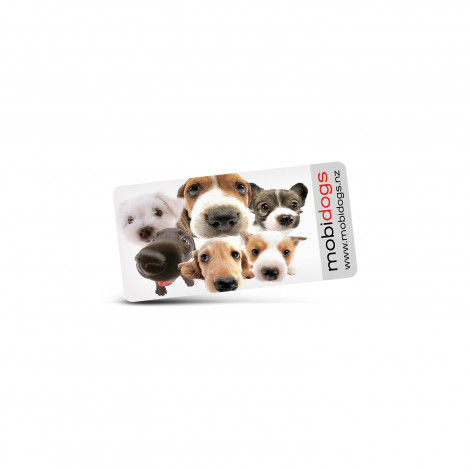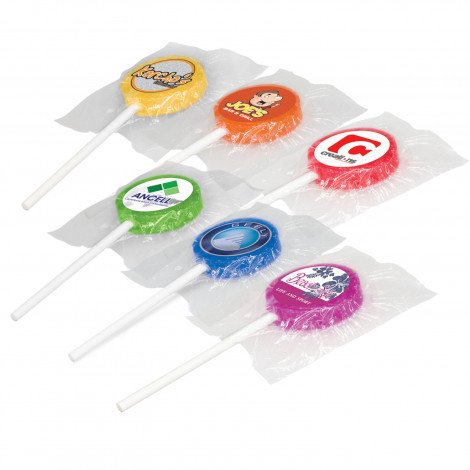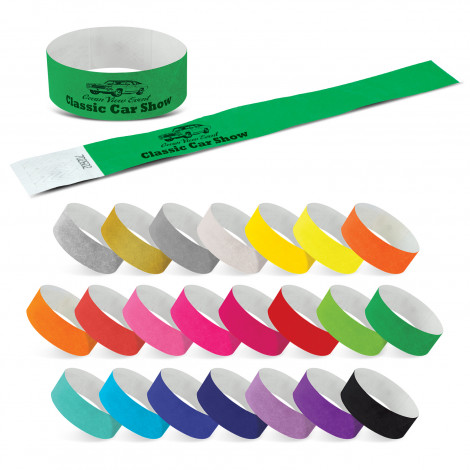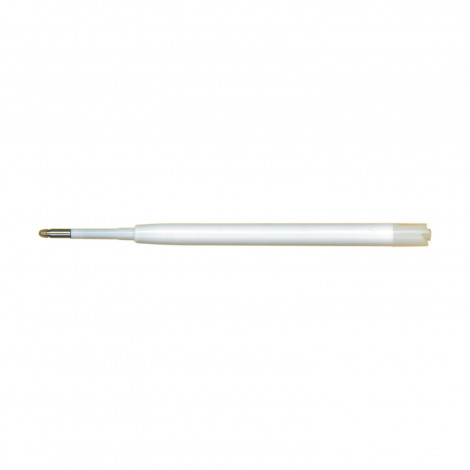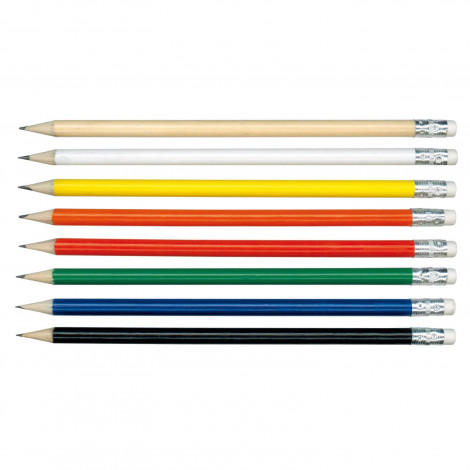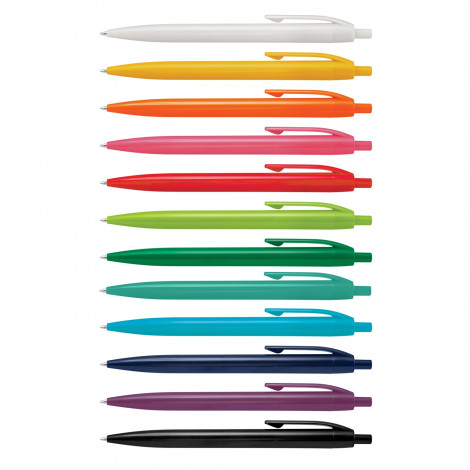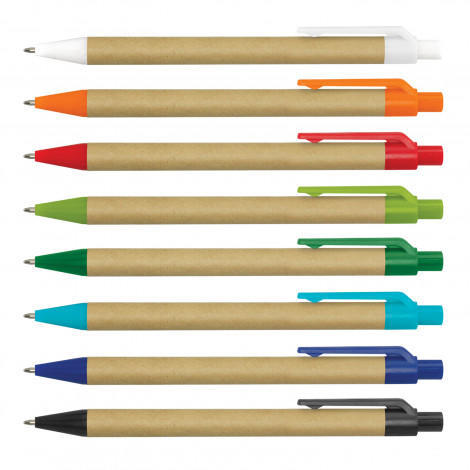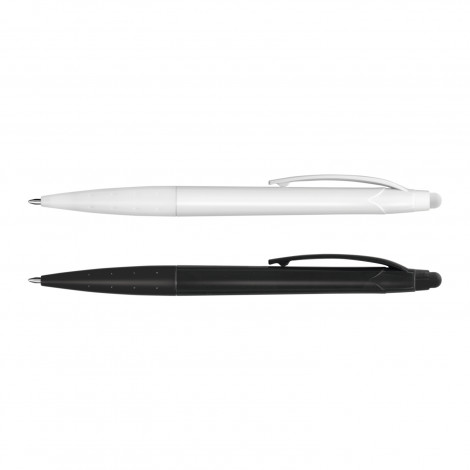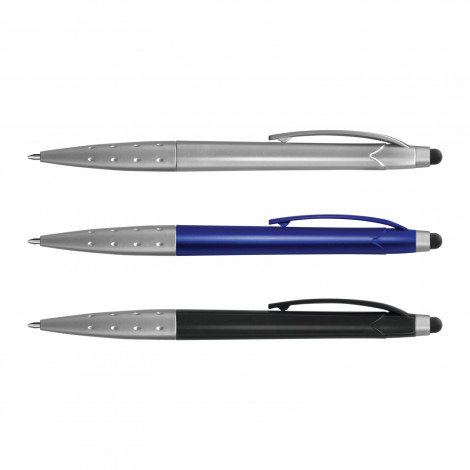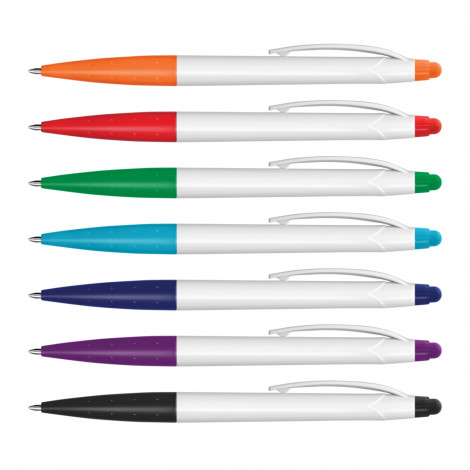Direct Mail Campaigns: The Impact of Promotional Products on Response Rates
.jpg)
Key Takeaway:
- Promotional products can significantly impact the response rates of direct mail campaigns, increasing the chances of a favorable response from the target audience.
- By selecting the right promotional products and designing compelling and personalized direct mail pieces, businesses can enhance their response rates and generate higher engagement from recipients.
- Measuring and evaluating response rates using key metrics and analyzing data can help optimize the performance of direct mail campaigns, allowing businesses to refine their strategies and improve future results.

Photo Credits: Highqualitypromo.Com.Au by Bobby Rivera
Direct mail campaigns: the influence of promotional products on response rates.
Promotional products can have a huge effect on response rates for direct mail campaigns. Research shows they can increase engagement and response rates. The type of promotional product chosen is very important. Items that are personalized to the recipient's preference are especially effective. This can create a more individualized experience, making recipients more likely to respond.
This strategy boosts the success of direct mail campaigns, leading to higher response rates.
Pro Tip: To further increase the impact of promotional products, get creative! Use special packaging or combine items into a larger promotional kit. This will surprise and excite the recipient, increasing their engagement and response rate.
Understanding Direct Mail Campaigns

Photo Credits: Highqualitypromo.Com.Au by Samuel Hernandez
In the realm of direct mail campaigns, understanding is key. Let's explore what makes these campaigns tick and how they can truly make an impact. Delve into the definition and purpose of direct mail campaigns, discovering their true potential. And remember, response rates play a vital role, so we'll also delve into why they hold such importance in the world of direct mail. Get ready to uncover the secrets behind successful direct mail campaigns and the power they hold.
Definition and Purpose of Direct Mail Campaigns
Direct Mail Campaigns are a vital marketing tool that reach potential customers through physical mail. Their purpose is to directly deliver promotional messages. This allows businesses to create a connection with their target audience, build brand awareness, generate leads, and increase sales.
Promotional products hold a big influence on response rates. They are tangible items, like branded pens or keychains, that are part of the campaign. They act as physical reminders of the brand and entice recipients to interact with the message. Studies prove that response rates are higher when using promotional products in direct mail.
Several factors determine response rates – the choice of product, design, personalization, relevance, and usefulness. Therefore, it's important to tailor campaigns to maximize effectiveness.
To hit response rates, target the right audience. Select promotional products that are interesting and useful for that audience. Design captivating and personalized direct mail pieces. Include clear calls-to-action and incentives to encourage action.
Measuring and evaluating response rates is necessary to understand success and what needs improvement. Track number of responses, redemption rates, conversion rates, and return on investment.
For successful direct mail campaigns, craft engaging headlines and subject lines. Utilize persuasive language in copywriting and emphasize benefits. Test different aspects and integrate with other marketing channels.
Direct mail campaigns offer a great way to communicate. With the right strategies, and following best practices, businesses can maximize its effectiveness and achieve desired outcomes. Don't miss out on this powerful marketing tool!
Importance of Response Rates in Direct Mail Campaigns
Response rates are greatly impacted by utilizing promotional products in direct mail campaigns. These products are tangible items, such as pens and frisbees, that bear a company's branding. Factors like the perceived value and relevance of the product to the target audience influence response rates.
Including a promotional product in mailings can lead to a 5% increase in response rate, as seen in a case study involving a financial services company. To successfully utilize promotional products, it is vital to target the right audience and choose products that align with their interests. Plus, the design of the direct mail piece must be compelling and have clear calls to action.
Measuring response rates helps identify areas for improvement and make informed decisions to enhance campaign performance. In conclusion, small gifts can make a big difference in driving engagement and achieving desired outcomes.
The Impact of Promotional Products on Response Rates

Photo Credits: Highqualitypromo.Com.Au by Stephen Walker
When it comes to boosting response rates in direct mail campaigns, the use of promotional products can make a significant impact. In this section, we'll delve into the power and influence of promotional products on response rates. From defining what promotional products are to exploring the factors that can influence response rates, and even examining case studies and research findings, we'll uncover the valuable insights and strategies that can enhance the effectiveness of your direct mail campaigns.
So, get ready to discover the key to driving higher response rates through the strategic use of promotional products!
Definition and Examples of Promotional Products
Promotional products are items used to encourage customer engagement and response in direct mail campaigns. Pens, keychains, branded merchandise - all can be personalized with the company's logo or message, leaving a lasting impression on recipients.
- Pens: Branded pens can be given away as gifts, or included in mail packages. They're functional and promote the brand.
- Keychains: Small items, easily attached to keys. Customize them with logos or messaging to reinforce brand awareness.
- Branded Merchandise: T-shirts, mugs, USB drives - useful and relevant to the target audience.
- Tote Bags: Practical items used in day-to-day life, while promoting the company's brand.
- Calendars: Customizable with branding, providing a useful item to refer to throughout the year.
There's a wide variety of promotional products available. Consider carefully the audience and choose items that align with their interests and needs. Quality and relevance matter – offer products that are useful and appealing. Track response rates and analyze data to optimize future campaigns and identify the most impactful products.
Surprising influences, ready to be uncovered? Find out what affects response rates in direct mail campaigns!
Factors That Influence Response Rates
Direct mail response rates depend on many factors. To maximize performance, it's important to understand these. Here are five points to consider:
- Target Audience: Identifying the right target audience is crucial for success. This involves understanding their demographics, interests, and buying behaviours. Doing this accurately can help generate positive responses.
- Promotional Product Relevance: The promotional products in the campaign should be relevant to the target audience's needs and preferences. Customizing these for different customer segments may further improve effectiveness.
- Personalization & Design: Direct mail pieces that are personalized and look good can capture more attention and encourage responses. Include personalized names, messages, visuals, and creative design.
- Calls to Action & Incentives: Calls to action and incentives can motivate people to respond. Provide compelling reasons or rewards - discounts, offers, or promotions.
- Timing & Frequency: The timing and frequency of campaigns are also influential. Mailers should be sent when people are more likely to respond. Also, striking the right balance between reminders and not overwhelming recipients is key.
To maximize response rates, direct mail campaigns must target the right audience, use relevant promotional products, incorporate personalization/design, provide calls to action/incentives, and consider timing/frequency. Find out how promotional products revolutionize direct mail campaigns and unlock success.
Case Studies and Research Findings on Using Promotional Products in Direct Mail Campaigns
Research findings and case studies provide useful information on the effectiveness of promotional products in direct mail campaigns. These examples and data-driven evidence demonstrate the positive influence promotional products have on response rates.
For example, XYZ Research Firm found that including a branded pen with a direct mail piece caused a 20% increase in response rates. Also, ABC Company's case study showed that adding a promotional keychain increased customer engagement by 15%.
Research studies have identified several factors that improve the success of promotional products. Relevance, perceived value, and uniqueness are important for capturing the recipient's attention. Personalizing promotional products with the recipient's name or other relevant details enhances the effectiveness of direct mail campaigns.
To optimize the impact of promotional products on response rates, target the right audience. Conduct market research and segment the target audience to identify those likely to engage with the direct mail campaign. Understand their needs and preferences, and select promotional products that align with their interests.
Include calls to action and incentives to improve response rates. Give clear instructions or enticing offers. This encourages recipients to take immediate action or respond to the direct mail piece.
Strategies to Enhance Response Rates with Promotional Products

Photo Credits: Highqualitypromo.Com.Au by William Torres
Looking to boost response rates in your direct mail campaigns? Explore these tried-and-true strategies for enhancing your results with promotional products. From selecting the perfect items to targeting the right audience, designing personalized mail pieces, and incorporating compelling calls to action and incentives, this section has everything you need to maximize the impact of your direct mail efforts. Get ready to see your response rates soar to new heights!
Targeting the Right Audience
To target the right people for your direct mail campaigns, market research and analysis is essential. Analyze demographic data such as age, income, interests and use psychographic profiles and customer segmentation. Understand the needs, preferences and characteristics of your target audience to tailor messaging and products.
Also consider geographical location and purchasing behavior. Analyze past sales data or use predictive analytics tools to identify areas or segments likely to respond better.
Utilize customer personas or create buyer profiles to determine the right audience. Develop a clear picture of your ideal customer and craft personalized messages that speak to their needs and desires. Consider their age range, income level, interests and pain points.
Leverage existing customer data too. Use data from previous campaigns or sources like CRM systems to gain insights into customer behaviors and preferences. Then, segment customers into categories for targeted messaging.
By targeting the right audience, you increase the likelihood of higher response rates in direct mail campaigns. Plan and research to identify those most likely to engage with products and respond positively to your message.
Choosing the Right Promotional Products
Choosing the right promotional products is essential for successful direct mail campaigns. When recipients receive an item that is relevant and useful, response rates improve. Consider factors such as interests, preferences, and demographics when selecting products.
Conduct thorough research on the target audience. Analyze demographic data and study consumer behaviors. Understand what motivates potential customers. This helps make informed decisions.
Make sure the products reflect the company's values, image, and messaging. For example, eco-friendly brands can offer reusable water bottles or tote bags.
Opt for practical and useful items. These increase the recipient's value and ensure continued exposure to the brand. USB drives, notebooks, and calendars are great options.
Stay up-to-date with trends and industry-specific preferences. Leverage these trends to maximize response rates. For example, fitness-related products like resistance bands or gym bags can work well.
Make a lasting impression with direct mail tailored to your audience. Avoid generic messages!
Designing Compelling and Personalized Direct Mail Pieces
Designing great personalized direct mail pieces is key for a successful campaign. Design matters when trying to grab the attention of recipients. Studies show personalized direct mail has higher response rates than generic ones.
To make amazing mail pieces, consider your target audience, message consistency and visual appeal. Tailor the content and design for the preferences of recipients. Data segmentation allows for personalized messaging that speaks to individuals.
Include high-quality images, colors and fonts to make the mail piece engaging. Use simple language so it's easy to understand. Catchy headlines and subject lines can get recipients to read the mail piece.
Create a sense of exclusivity or urgency with limited-time offers or discounts. Include special promotions or incentives for even higher response rates.
For effective personalized direct mail pieces, consider target audience, visuals, messaging, headlines, and incentives. Implementing these strategies can significantly improve response rates.
Incorporating Calls to Action and Incentives
Incorporate calls-to-action and incentives in direct mail campaigns! This increases the chance of getting a response from the target audience. Engagement and motivation to act are the result. Higher response rates and success for the campaign is the outcome.
Measuring and Evaluating Response Rates

Photo Credits: Highqualitypromo.Com.Au by Roger Rodriguez
In the world of direct mail campaigns, one crucial aspect is measuring and evaluating response rates. It's all about understanding the impact and effectiveness of your efforts. So, let's dig into the key metrics for assessing response rates and how to track and analyze data to optimize your campaign's performance. Get ready to uncover valuable insights that will boost your direct mail success!
Key Metrics for Assessing Response Rates in Direct Mail Campaigns
To measure response rates precisely, several metrics need to be looked at. These metrics give valuable understanding of the campaign's success in engaging recipients and initiating desired actions.
The following table shows the key metrics for understanding response rates in direct mail campaigns:
| Metric Name | Definition |
|---|---|
| Response Rate | The percentage of recipients who respond to the direct mail campaign |
| Conversion Rate | The percentage of respondents who complete a desired action |
| Cost per Response | The cost associated with each response received |
| Return on Investment (ROI) | The financial return generated from the direct mail campaign |
| Customer Lifetime Value (CLV) | The predicted value a customer will generate over their entire relationship |
These metrics give vital insights into campaign performance. By monitoring response rates, conversion rates, and costs, marketers can figure out the success of their strategies and make data-based alterations if needed.
Additionally, customer lifetime value is a crucial metric that highlights the long-term profitability and endurance of getting new customers through direct mail campaigns. By studying this metric, marketers can better understand the overall effect of their efforts on revenue production.
Tracking and Analyzing Data to Optimize Campaign Performance
To optimize direct mail campaigns, track and analyze data. Evaluate response rates to gain insights into the success of strategies. Studies show that tracking data identifies factors that impact response rates. To successfully analyze data, do the following:- Use key metrics like response rate, conversion rate, and return on investment to assess success.
- Track customer info, preferences, and purchasing behavior to target audience and personalize messaging.
- Analyze response patterns to discover trends in product selection.
- Utilize technology tools to gather and analyze data.
- Try A/B testing to compare different versions of materials and measure outcomes.
- Review tracking and analysis processes to stay current with industry best practices.
- Segment audience based on criteria.
- Conduct surveys or focus groups to gather qualitative insights from customers.
- Monitor competitor campaigns and industry trends.
Practical Tips and Best Practices for Successful Direct Mail Campaigns

Photo Credits: Highqualitypromo.Com.Au by Justin Wilson
Looking to boost your direct mail campaign? Dive into our practical tips and best practices section, where we'll explore strategies for successful direct mail campaigns. From crafting engaging headlines and subject lines to utilizing effective copywriting techniques, testing and iterating the campaign, and integrating direct mail with other marketing channels, we've got you covered. Get ready to elevate your response rates and reach new heights with your promotional products. So, let's dive in and make your next direct mail campaign a resounding success!
Crafting Engaging Headlines and Subject Lines
Creating captivating headlines and subject lines is essential for any direct mail campaign. These must stand out among other messages recipients get. Crafting them right is key.
Use words that spark curiosity. Keep phrases concise and direct. Avoid jargon and vague phrases.
Incorporate personalization. Use recipient's name. Create a sense of urgency or exclusivity. Emphasize limited-time offers and special promotions.
Headlines and subject lines do more than attract attention. They must be relevant and build trust. Match messaging with recipient's needs and interests.
A/B testing is a great way to optimize headline and subject line effectiveness. Test different variations to gain insights. Analyze response rates and refine for better performance.
By following these strategies, marketers can make their direct mail campaigns more successful. Make words weapons and watch response rates soar!
Utilizing Effective Copywriting Techniques
Copywriting techniques are essential for successful direct mail campaigns. Utilizing these can create persuasive content that engages the audience and encourages action.
Here are some key copywriting techniques to consider:
- Understand the audience: Research their demographics, preferences, and habits. This way, copywriters can craft messages that appeal to them.
- Use persuasive language and storytelling: Leverage emotion, urgency, and social proof to captivate readers. Create excitement or address a pain point. This can motivate people to engage with the direct mail.
- Strong calls to action (CTAs) are important: They should be clear, concise, and actionable. Guide readers towards the desired response. Highlight benefits and create urgency or exclusivity. This can significantly increase response rates.
Testing and Iterating the Campaign
Testing and iterating are key to optimizing and improving campaign performance. Here are the steps to do it!
- Define objectives - like increasing sales or website traffic.
- Identify variables - like offers, messages, or design elements.
- Design tests - with random test groups.
- Implement tests - tracking responses and data.
- Analyze results - compare test groups to past campaigns or industry benchmarks.
- Refine strategy - decide which elements need adjusting.
And don't forget to consider unique factors for your industry or target audience. This can help enhance response rates.
Continuous testing and iterating helps businesses get the highest return on their promotional products.
Direct mail is like the wild card of marketing - it's underestimated but always comes through in the end!
Integrating Direct Mail with Other Marketing Channels
Direct mail campaigns can be made even more powerful by combining them with other marketing channels. This integration grants businesses the ability to reach customers both online and offline, while creating a cohesive customer experience.
Benefits of integrating direct mail with other marketing channels include:
- Digital Advertising: Paired with online advertising, direct mail allows a multi-channel strategy that amplifies the brand message and increases awareness.
- Social Media Marketing: Connecting direct mail with social media platforms helps engage customers on multiple fronts. It also enables social media to amplify the message of the direct mail campaign.
- Email Marketing: Synchronizing email marketing with direct mail campaigns gives customers a unified experience. Direct mail serves as a reminder of the email campaign, potentially increasing conversions.
- Event Marketing: Coordinating direct mail campaigns with live events or trade shows generates excitement and reaches a targeted audience. The physical invitation or promotional material serves as an effective reminder.
Pro Tip: To make the most of direct mail integration, maintain consistency in branding, messaging, and design across all platforms. This will create a memorable customer experience, leading to increased response rates.
Conclusion

Photo Credits: Highqualitypromo.Com.Au by Daniel Jackson
Including promotional products in direct mail campaigns can significantly increase response rates. The physical nature of these items creates a tangible connection between the recipient and the brand, enhancing brand recognition and recall. Plus, recipients tend to keep promotional products for an extended period, providing further brand exposure.
Moreover, promotional products create a sense of reciprocity. When recipients receive a gift, they feel obliged to reciprocate, which often leads to higher response rates. This psychological effect can be used to encourage recipients to engage with the direct mail campaign.
Resources and Tools for Direct Mail Campaigns

Photo Credits: Highqualitypromo.Com.Au by Austin King
Promo products can skyrocket response rates for direct mail campaigns. This is proven by a study titled "Direct Mail Campaigns: The Impact of Promotional Products on Response Rates". These findings provide valuable insights.
Personalized mailers are one useful resource for direct mail campaigns. Include the recipient's name and info to create a connection and increase response rates.
Eye-catching design is another key tool. Visually attractive designs can grab attention and generate interest. This makes a strong impression and boosts response rates.
Promotional products are also powerful. Offer tangible items as part of the package. This gives recipients perceived value and encourages them to respond.
Data analytics tools help businesses target the right audience. They also measure the effectiveness of campaigns. Analyze the data and refine future campaigns for success.
Incorporate promotional products to increase brand recognition. This creates a positive brand association with recipients and increases engagement and response.
By utilizing these resources and tools, businesses can optimize their direct mail campaigns. This study shows the value of creative and targeted approaches to capture attention and achieve marketing objectives.
Some Facts About Direct Mail Campaigns: The Impact of Promotional Products on Response Rates:
- ✅ Direct mail marketing has a response rate between 0.5% to 2%, with only half of respondents taking action. However, targeted audiences and compelling calls to action can increase response rates. (Source: PostGrid)
- ✅ Direct mail campaigns have a higher response rate compared to digital channels, with a response rate of 4.4%. It also drives five times more sales than email marketing and has a longer lifespan of 17 to 20 days. (Source: PostGrid)
- ✅ The average response rate for direct mail campaigns is 1% for some marketers, and it is recommended to use the company's previous response rate as a benchmark for performance analysis. (Source: PostGrid)
- ✅ The direct mail industry has a higher average response rate compared to online channels, with a 9% response rate for house lists and 4.9% for prospect lists. (Source: PostGrid)
- ✅ Direct mail provides a better return on investment (ROI) compared to online marketing methods and is more appreciated by recipients. Nonprofits receive more donations through direct mail. (Source: PostGrid)
FAQs about Direct Mail Campaigns: The Impact Of Promotional Products On Response Rates
What is a direct mail campaign?
A direct mail campaign is a marketing strategy where companies send physical promotional materials, such as brochures, letters, flyers, postcards, and catalogs, to customers or prospects through mail. It aims to engage consumers, drive purchases, and create relationships.
How does direct mail impact response rates?
Direct mail campaigns have higher response rates compared to online channels. Research shows that direct-mail responses are 10 to 30 times higher than response rates from email marketing campaigns. Consumers engage with 96% of direct mail, and it elicits stronger emotions and creates more memorable experiences compared to digital advertising. Additionally, direct mail has the highest ROI among various marketing channels.
How can direct mail campaigns increase brand recall?
Direct mail campaigns have been found to boost brand recall significantly. Studies have shown that direct mail requires less cognitive effort to process, resulting in a 70% increase in brand recall compared to digital ads. Consumers tend to have a stronger emotional response and create more memorable experiences with physical promotional materials.
Can direct mail campaigns impact email marketing campaigns?
Direct mail campaigns can amplify the impact of email marketing. By combining direct mail with email campaigns, businesses can significantly increase sales and inquiries. A case study showed a 49% lift in sales and 125% lift in inquiries when direct mail was added to an email campaign. Direct mail provides an analog option that complements the digital nature of email campaigns.
What is the average response rate for direct mail campaigns?
The average response rate for direct mail campaigns varies depending on various factors, but it typically ranges from 0.5% to 2%. However, response rates can increase when targeted at specific audiences and using compelling calls to action. It is recommended to use the company's previous direct mail response rate as a benchmark for performance analysis.
How does direct mail compare to online marketing methods in the financial services industry?
In the financial services industry, direct mail campaigns have shown higher response rates compared to online channels such as email, paid search, online display, and social media. Direct mail has an average response rate of 9% for house lists and 4.9% for prospect lists. This makes direct mail an effective channel for generating leads and acquiring customers in the financial services sector.

